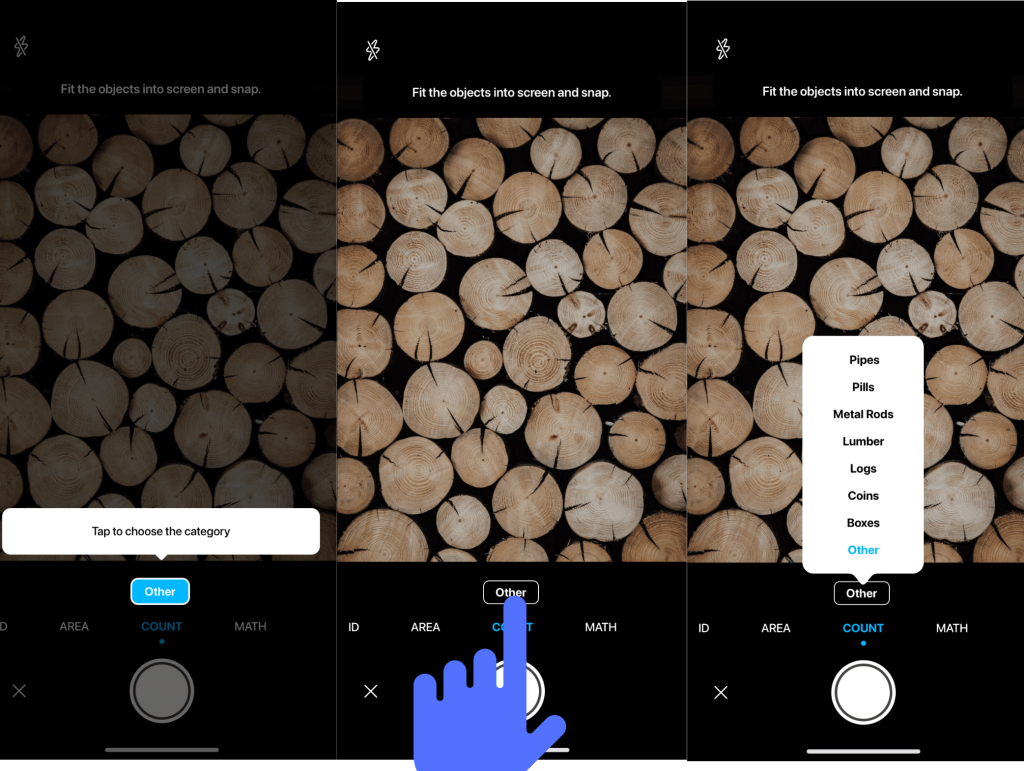

28 feb 2025
Counting objects can be a tedious and error-prone task, no matter the reason or setting. For those who deal with a lot of manual counting, a counting app can make life much easier. These apps not only speed things up but also help avoid mistakes, boosting efficiency. We’ve already explored the wider benefits of counting apps in another post, but here, we’ll show you how to turn your phone into an automatic counter and what to look for when choosing the best counting app.
iScanner is a PDF scanner app that is heavily loaded with AI-powered features (not all of them document and scanning-related). In fact, iScanner was one of the first counting apps back in 2021, and we’ve been perfecting our Count mode ever since.
Recently, we’ve added object categories, which significantly improved the speed and accuracy of the counting. There are eight categories in total that we created based on our users’ preferences:
1) Install the iScanner app, if you don’t already have it (works on both iOS and Android).
2) Tap the blue plus icon at the bottom center and choose camera.
3) Swipe left to the Count scanning mode.

4) Now, tap a small tag that reads Other—this will take you to the categories selection. Tap the category you need. Please note that you won’t be able to change the category after the picture has been taken.
5)Take a picture of the objects you need to count (preferably not at an angle and so that your objects are in the center—this facilitates the process and improves accuracy).

6) Tap Count, and the app will display your total in seconds.
The total screen is interactive—you can add or subtract items in your photo from the total by tapping on them (that’s in case the AI has made a mistake and missed an item or mistakenly counted an object that’s not in your selected category).
Another benefit of using iScanner as a counting app is that it has a PDF editor, an excellent file management system, and cross-platform cloud sync. You can save the results for your records and easily share them as a PDF file or via a link, or upload them to a cloud service of your choice.
You can also rename the file with the location, type of item, or any other identifiable info, add your name and signature to the document itself, or add a new page for your comments to the document. This can facilitate collaboration if a large team is doing an inventory count in different parts of the facility—they can all upload their results to a shared location where a manager can consolidate them. Plus, all the records will be attributable, dated, and contain any other relevant details that future auditors might be interested in.
An app that counts things typically uses a neural network model trained to identify objects in images. The flow usually looks like this: you snap a picture of whatever it is you need to count, indicate one object for the algorithm to look for, and then the counting app counts up every object of the type and displays the total. It’s that simple.
Despite the user-facing simplicity, though, training a neural network model to count objects is anything but simple, and the accuracy of counting hinges on how the model is trained. A lot of developers opt for pre-trained models due to their accessibility and ease of customization. However, the level of accuracy required for professional tasks comes with models trained from the ground up. This kind of task usually requires an in-house team of skilled neural network engineers. And this is exactly what we have at iScanner.
As we’ve mentioned before, accuracy sufficient for professional use requires a neural network model that’s been trained from scratch on large datasets. This takes a lot of resources and a whole team of deep-learning engineers. So when choosing a counting app, it’s a good idea to look at bigger developers who would have those kinds of resources. If an app has other AI-powered features, that’s a good sign because it means the developer likely has a team of machine learning specialists.
Another important thing to keep in mind is that a counting app should allow you to choose a specific category of objects. Why does this matter? Well, it means the app developers have worked with a big bunch of examples to teach their system about all the different varieties a single type of object can have. Take, for instance, pills, pipes, coins, and boxes, which come in all shapes and sizes. When a counting app has categories, it becomes much more accurate and less likely to fail to identify an unusually shaped item.

Whether it’s for research or an annual inventory count, manual counting drains employees’ time, energy, and motivation. Worst of all, even with all that effort, accuracy remains unreliable. Typically, counts must be repeated by different teams—sometimes even a third time if discrepancies arise. Counting apps provide a game-changing alternative. Industries that have adopted these solutions report saving 70–80% of their time, no matter what they’re counting. And that’s just the time spent on the task itself—it doesn’t even account for the energy employees regain by avoiding such a tedious and frustrating process.
